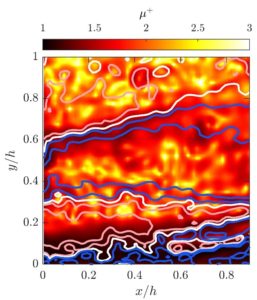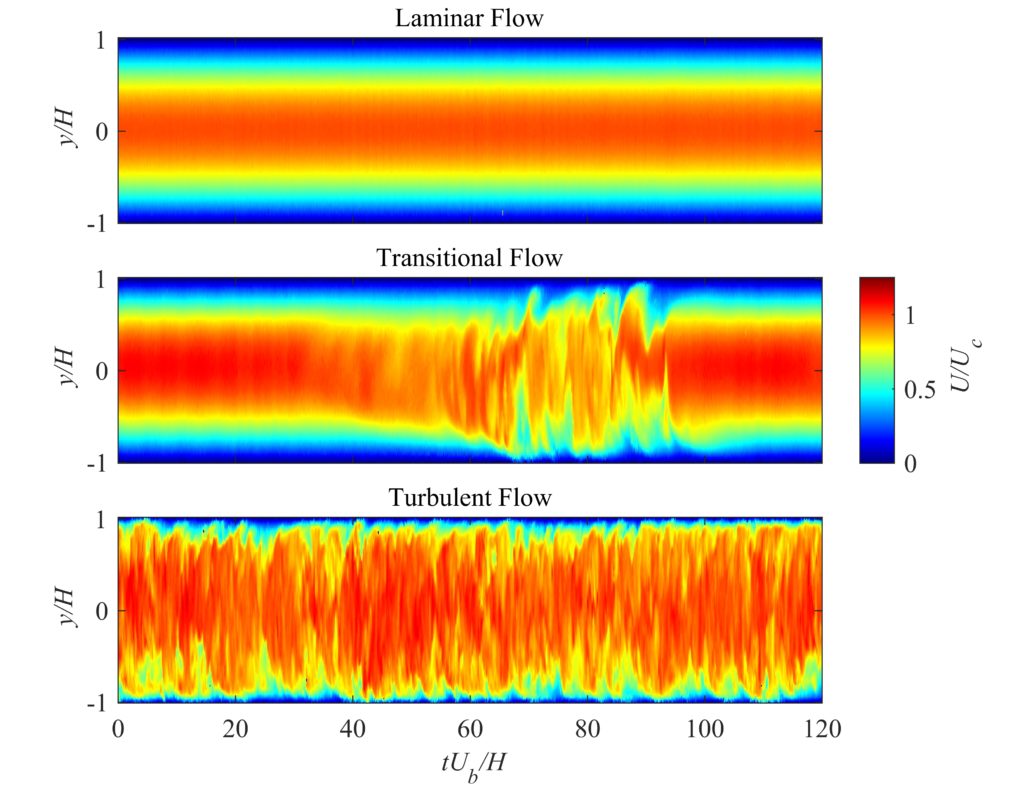Drag Reduction in Liquid Flows
Rheological Drag Reduction
Dissolving a trace amount of polymer or surfactant into a turbulent liquid flow can produce a large reduction in skin friction drag (as large as 80%). The mechanism by which these additives reduce drag is poorly understood, let alone if the mechanism is the same among polymers and surfactants. We experimentally compare the rheology and drag-reducing capabilities of different types of polymer and surfactants in various canonical flows (i.e., pipes, channels, and boundary layers).
Comparing Polymer and Micellar Drag Reduction
The video included on this page demonstrates particle trajectories measured in a turbulent channel flow of a drag-reduced surfactant solution. Trajectories are derived using a technique known as 3D-PTV based on the shake-the-box algorithm. When the velocity trajectories are averaged, we obtain high spatial resolution mean velocity statistics of the non-Newtonian flows – the results of which are published in Warwaruk, L. and Ghaemi, S., 2021. A direct comparison of turbulence in drag-reduced flows of polymers and surfactants. Journal of Fluid Mechanics, 917.
Video: Lagrangian velocity trajectories of a surfactant solution within a turbulent channel flow.
Rigid Polymer Drag Reduction

Using our state-of-the-art measurement technique, non-Newtonian features of the drag-reduced flows can be derived “in-situ.” The included figure demonstrates an instantaneous contour of a non-Newtonian viscosity within a drag-reduced flow a polymer solution. For more information, see our published work Warwaruk, L. and Ghaemi, S., 2022. Near-wall lubricating layer in drag-reduced flows of rigid polymers. Physical Review Fluids, 7(6), p.064605.
Image: Filled contours of instantaneous viscosity in a turbulent channel flow, overlaid with open contours of velocity fluctuations.
Laminar to Turbulent Transition
The laminar to turbulence transition process in Newtonian fluids has been studied extensively. Introducing polymer drag-reducers to the solution has been shown to affect the transition phenomenon significantly. The research in our group is trying to shed light on the transitional state between laminar and turbulent flows in non-Newtonian fluids.
These figures show the streamwise component of velocity normalized by bulk velocity. The contours were acquired from particle Image Velocimetry (PIV) of channel flow in a streamwise-wall-normal (xy) and streamwise-spanwsie planes (xz). The figures compare laminar, transitional and turbulent states of flow. Vertical and horizontal axes are normalized by channel half-height. A transitional structure, known as puff, is also illustrated in the streamwise-spanwise mid-channel plane.


